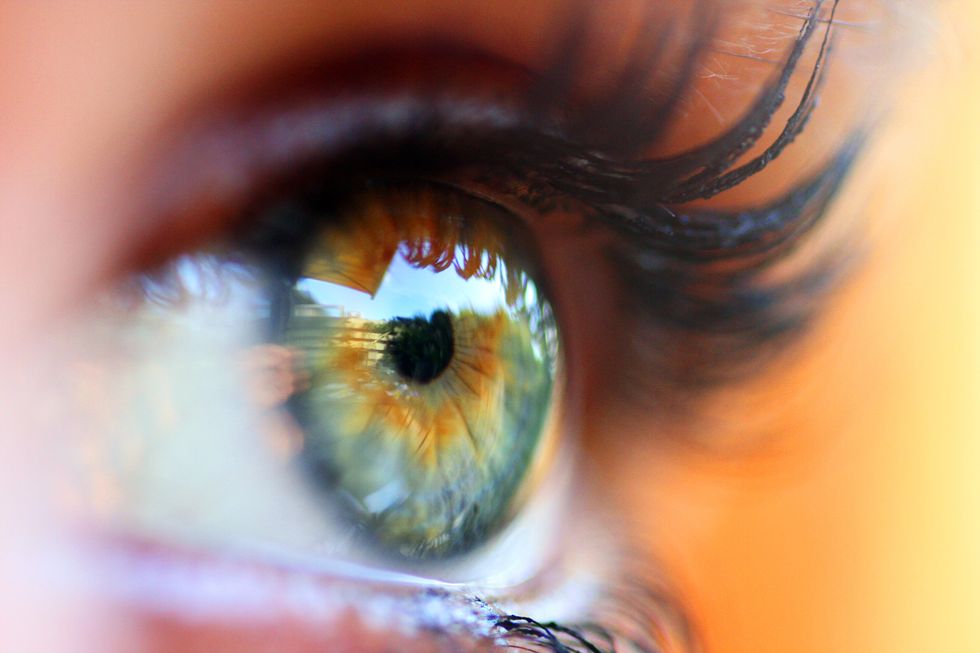’99.7% chance of alien life’, top scientist declares as three signs give cause for optimism: ‘That is good news’
GB News
The findings push the boundaries of what we understand about human vision
Don't Miss
Most Read
Trending on GB News
Scientists at the University of California have claimed to have discovered a new colour that no human has ever seen before.
Named "Olo", the colour was revealed during an experiment where laser pulses were fired into volunteers' eyes.
The research, published in the journal Science Advances on Friday, targeted just one type of cone cell in the retina.
This resulted in participants witnessing a striking blue-green shade that doesn't appear in nature and can't be seen without special lab equipment.

Austin Roorda said there is 'no real way to convey the colour'
Berkeley
Five people with normal colour vision participated in the study, including Professor Ren Ng himself.
The experiment used a device called "Oz" - a setup of lasers, mirrors and optical components.
Researchers managed to isolate and stimulate just the M-cones, which are the cells in the eye that detect green.
Normally, these cones work in groups, overlapping with others so colours blend.
By activating only the M-cones, scientists triggered a colour signal that the brain doesn't usually receive.
Professor Ng described Olo as "more saturated than any colour that you can see in the real world" when speaking to BBC Radio 4's Today Programme.
He explained: "Let's say you go around your whole life and you see only pink, baby pink, a pastel pink. And then one day you go to the office and someone's wearing a shirt, and it's the most intense baby pink you've ever seen, and they say it's a new colour - and we call it red."
LATEST DEVELOPMENTS:

The colour can be observed by activating only the M-cones in the eye
GETTY
In another interview, Ng called the experience "jaw-dropping" and "incredibly saturated".
The name Olo comes from the binary 010, where the M cone represents the 1, and is the only cone switched on.
To confirm what they were seeing, participants adjusted a digital dial to match the new hue.
Everyone agreed it was completely unlike anything they'd ever seen before.
Austin Roorda, a vision scientist on the team, said: "There is no way to convey that colour in an article or on a monitor. The whole point is that this is not the colour we see."

Scientists said this shade was closest to olo, but said the real thing was much more saturated
Ren Ng
Not all scientists are convinced that Olo is truly a new colour.
Professor John Barbur, a vision scientist at City St George's University of London, called the experiment a "technological feat" but questioned whether Olo counts as a brand-new colour.
He told The Guardian: "It is not a new colour. It's a more saturated green that can only be produced in a subject with normal red-green chromatic mechanism when the only input comes from M cones."
Interestingly, Richard Dawkins appears to have predicted this discovery over two decades ago.
In his 2004 book "The Ancestor's Tale", co-written with Yan Wong, Dawkins speculated about this exact possibility.
He wrote about neurobiologists potentially stimulating a single cone cell electrically, causing the brain to see a "super green" hue "such as could not possibly be achieved by any real light".
Dawkins recently noted: "This is precisely what has now been done. Makes a nice change to be cast in the role of prophet."
Despite some scientific debate, the UC Berkeley team remains optimistic about their discovery's implications.
They believe their findings could help future research into colour blindness.
The experiment may also push the boundaries of what we understand about human vision.
Professor Ng admits Olo is "certainly very technically difficult" to see.
However, he says this experiment proves the brain might be capable of processing colours far beyond what we experience in everyday life.








